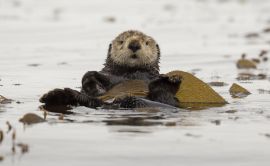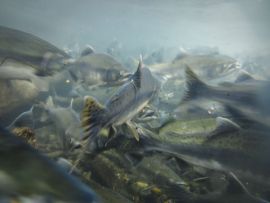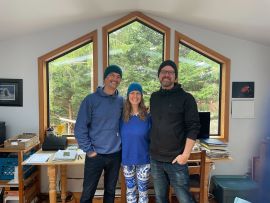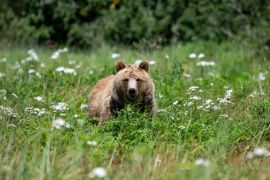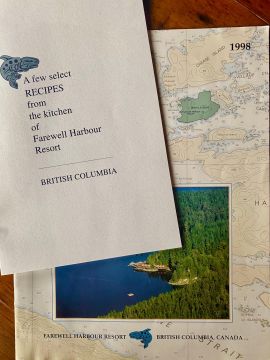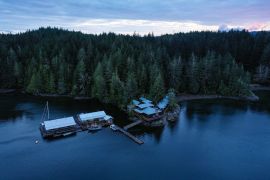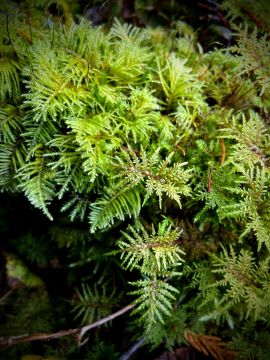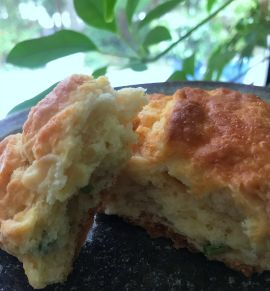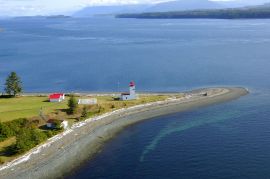The Forest Floor with Marlie
Take a walk through the rainforest with guide, Marlie TempleSome of my favourite things from our backyard island rainforest are not the megafauna - the bears, deer, or wolves - but the small inconspicuous things that can easily go unnoticed unless you take a moment to slow down and look a little closer. Here are some of my personal favourites to keep an eye out for next time you are walking in the Great Bear Rainforest!
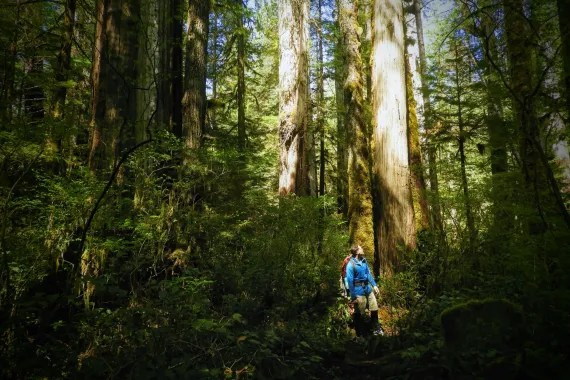
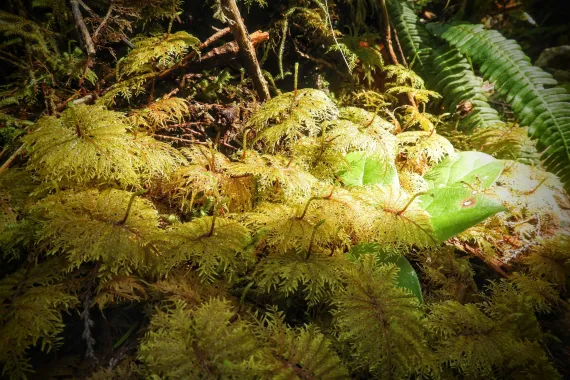
First and foremost is the all-encompassing green carpet that can cover every square inch of the forest floor, surrounding rocks and trees….MOSS! In order to grow, moss needs moisture, so what better place to call home than a rainforest that gets an average of 6 meters of rainfall per year. Out of the multitude of textures and shades of green all woven into one carpet, my personal favourite has to be step moss. Step moss is easily distinguished by its feathery fronds and step-like branching system, each of which signifies one year of life. The oldest step moss I have found to date was 16 years old!
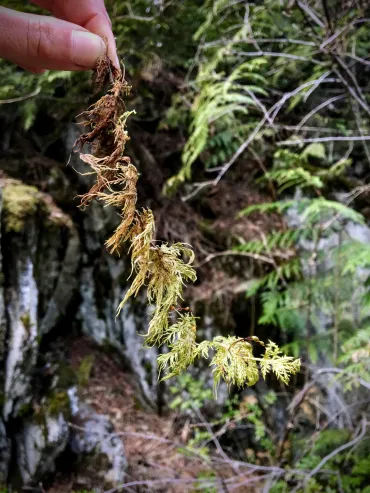
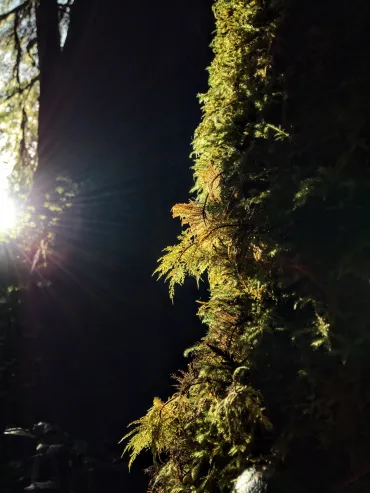
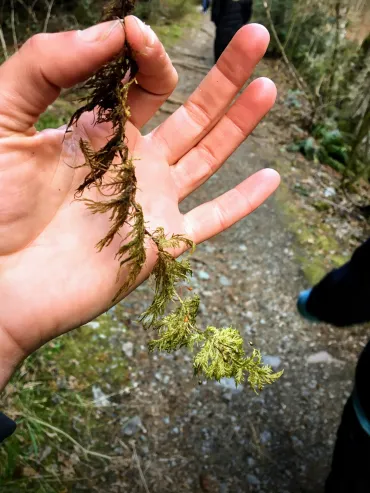
Has anyone walked through the forest after a big wind storm and seen the ground littered with really bizarre looking leaves? These, in fact aren’t leaves, but lichen, which is an integral part of the forest ecosystem. Interestingly Lichen is not a single organism, but the result of a symbiotic relationship (or partnership) between two different organisms to form a completely new one; fungus and algae. In many cases, the fungus supplies the structure for algae to grow, and the algae produce the food for the fungus. Lungwort lichen is a species that grows on tree trunks and branches, and during wind storms, can fall to the forest floor below. This is where the real magic happens. Lungwort lichen abstracts nitrogen from the air and ‘fixes’ it, meaning when it falls to the ground and decomposes, it delivers all that nitrogen into the forest floor, fertilizing it in a way it that wouldn’t occur otherwise. Lungwort lichen was widely used medicinally for various ailments by First Nations and early settlers to treat pneumonia, tuberculosis, cough and other lung diseases as well as for its anti-bacterial properties.
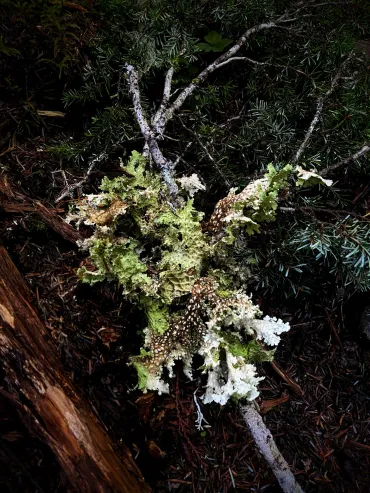
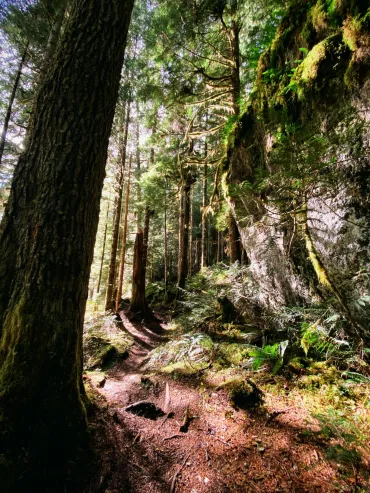
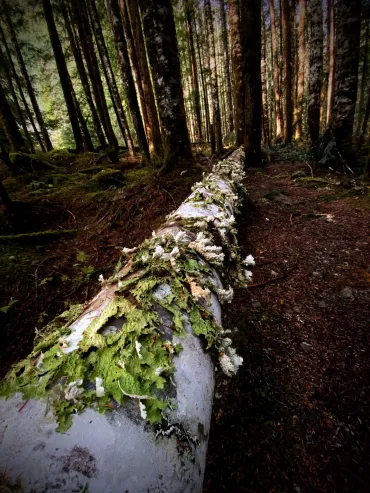
And finally, the best for last; the gargantuan banana slug! Up to 10 inches long and the biggest slug in the Americas, this sausage of slime is a vital part of the forest ecosystem that is often overlooked. By eating fallen leaves, animal droppings, and dead plant material, banana slugs aid in the decomposition of the forest and contribute to the nutrient cycle as they produce nitrogen rich fertilizer. One of the ways in which they attract a mate is by leaving a trail of slime everywhere they go. When a banana slug encounters another’s trail, they’ll work tirelessly to catch up to whomever they’re following, and will even eat some of the slime along the way for extra energy. Finding the love of your life is tiring work! One of the most interesting things about them though, is that they breathe, poop, and reproduce all through the same hole on the right side of their head. Talk about multi-tasking…!
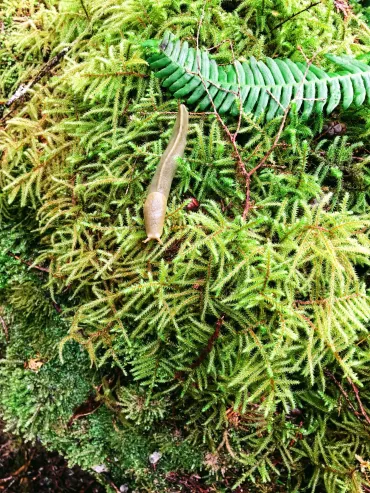
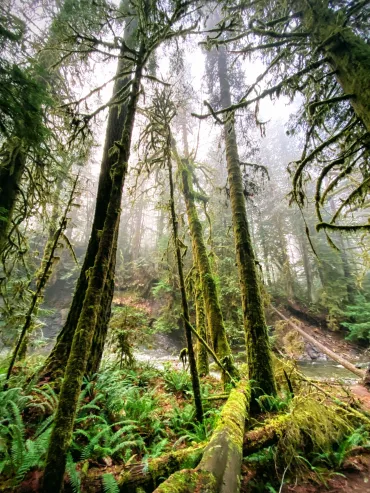
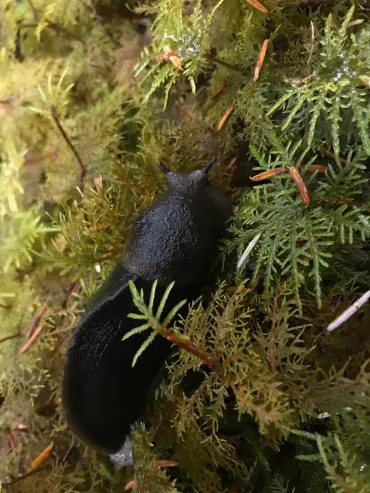
Despite heading out into the woods in search of bears and other charismatic creatures, sometimes it can be enough to simply slow down and take a closer look at the smaller things covering literally every inch of the forest that surrounds you. Each piece is just as vital as the next to the health and wealth of the temperate rainforest.
-- By Marlie Temple















